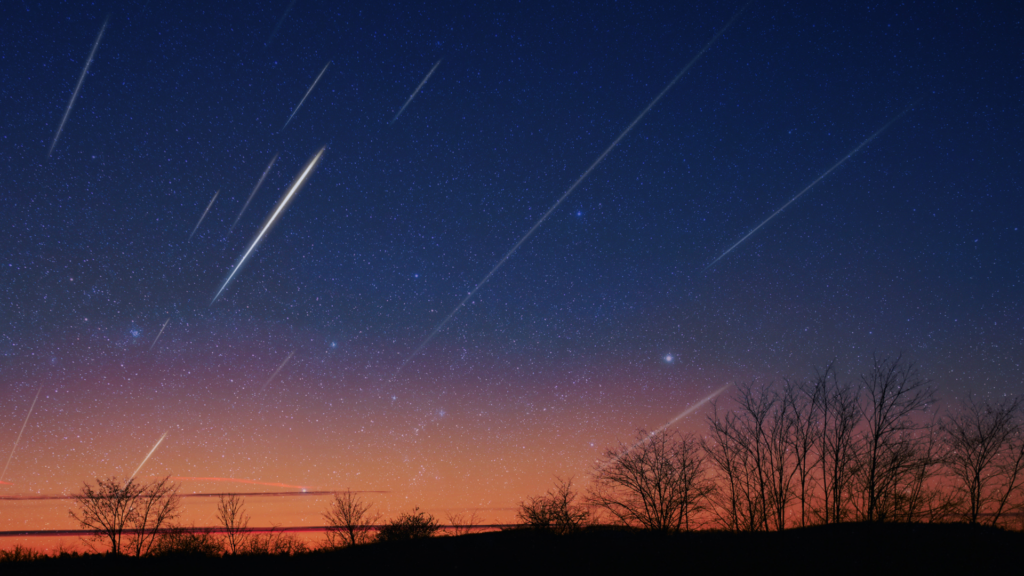The beginning of May is the time of the annual η-Aquariids meteor shower, the third most powerful in the Earth’s sky. It is formed by solid particles ejected by the famous Halley’s Comet and scattered along its orbit. The comet’s orbit comes closest to the Earth’s at the location where the Earth is on 5-6 May, i.e. on these days our planet passes through the densest part of the meteor swarm, and therefore the maximum activity of the stream is observed.
Recently, Halley’s Comet passed the farthest point of its trajectory from the Sun and began to approach it. One might assume that the densest part of the η-Aquarid swarm is moving somewhere near its “source”, and thus their activity should be relatively low in the coming years. In fact, this is not entirely true. Clusters of meteoric particles ejected by the “tail star” during various passes through the central regions of the Solar System gradually move away from the comet’s nucleus and can sometimes end up almost on the opposite side of the orbit. According to the calculations of some astronomers, something similar should have happened to the meteors generated by the comet during its passage around 470 B.C. Their “independent swarm” is now crossing the equator, and the Earth will pass through its densest part on 4-5 May 2024.

It is expected that the η-Aquariids’ activity may exceed 100 meteors per hour. The American Meteor Society’s website shows the expected peak on 5 May at 8:43 a.m. BST (11:43 a.m. Kyiv Summer Time). It will be daytime in Ukraine, but in reality, all such predictions are rather tentative, so the highest activity can be expected a few hours earlier or later. The radiant of this stream, located in the constellation Aquarius and at the latitude of Kyiv, appears above the horizon at around 3 am, so we advise everyone who has the opportunity to observe the southeastern part of the horizon at such an inconvenient time to pay attention to the “shooting stars”, which will unusually fly upwards instead of downwards. Since meteors generated by Halley’s Comet enter the Earth’s atmosphere at a speed of over 65 km/s, they often become very bright, but still, after 4 pm, when the navigational twilight begins, almost all of them will cease to be visible in the bright sky.
Meanwhile, the Olbers comet, which belongs to the same Neptune family as Halley’s comet, is approaching the Sun.

